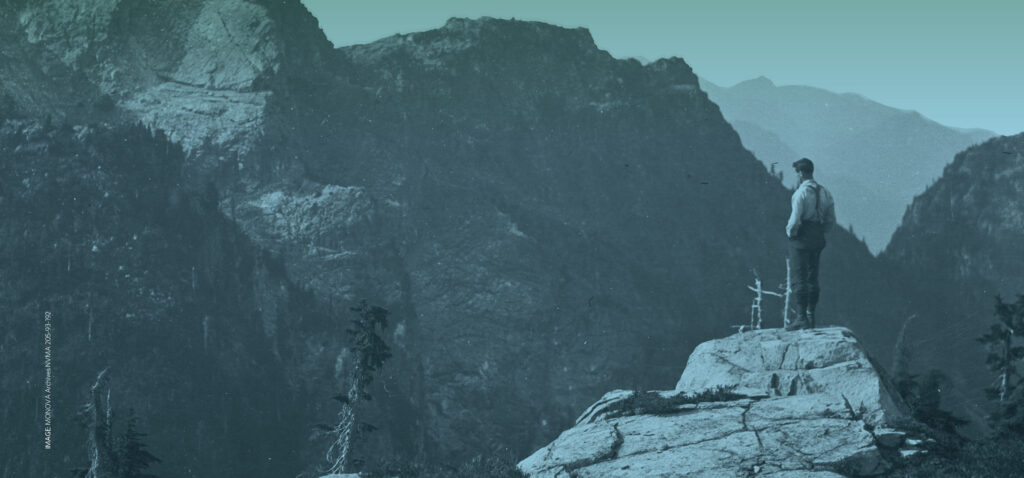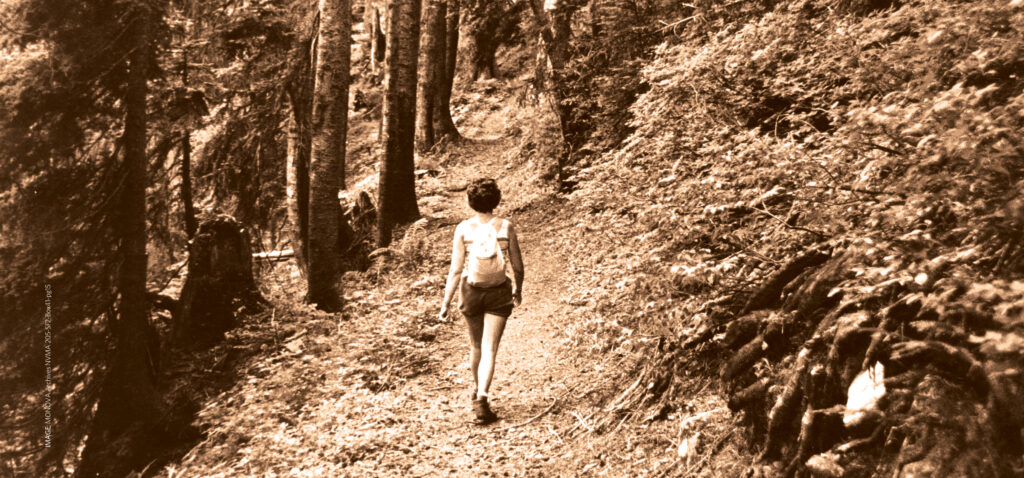There are 66 mountains on Vancouver’s North Shore (the tallest of which reaches 1,600 meters!), making it a world-class destination for snow sports, hiking and biking. The mountain range extends across the mainland coast, all the way to the Yukon. These mountains are, as the Found in the Mountains exhibit describes, ‘an icon of beauty, a landscape for adventure and a cultural beacon for our community.’ Now until January 12 2025, head to MONOVA to learn about these great granite peaks, and what they mean for both the residents and visitors who live, play and connect with them.

Hear the ancient Sḵwx̱wú7mesh (Squamish) stories that inform the profound connection that the Sḵwx̱wú7mesh have fostered with this landscape since time immemorial. Mountaintops are considered to be sacred places where supernatural beings are said to exist, or where significant moments from ancient history have taken place. For example, you can learn about the legend behind the iconic pair of mountain peaks in West Vancouver that settlers called The Lions, but which are known to the Sḵwx̱wú7mesh as Sch’ích’iyuy (sisters, or twins). You can also visit the First Nations Category of the North Shore Culture Compass, developed in partnership with the Sḵwx̱wú7mesh Úxwumixw (Squamish Nation) and səl̓ilwətaɬ (Tsleil-Waututh Nation), to find out how to pronounce local place names and learn more about the stories, art and animals that have shaped Vancouver’s North Shore.
Between the arrival of settlers in the 1800s who started logging the cedar, fir, and hemlock trees that make up the local temperate rainforest for profit, and the growing popularity of using the mountains for leisure and sports, this landscape has changed significantly over time. A slideshow of archival photos from the British Columbia Mountaineering Club (BCMC) and the North Shore Archives, document these changes, as well as people, young and old, using the mountains as their playground. BCMC started in 1907 and their members were the first to ascend 14 of the North Shore peaks and they also built out many of the trails there today. Vancouverite Phyllis Munday was a pioneer for women in mountaineering. She summited over 100 peaks during her life and long before the mention of any local ski resorts, she helped to pioneer the activity of hiking up the mountain carrying heavy wooden skis, before skiing down. She was a lifelong member of the Alpine Club of Canada, the first mountaineering club to welcome women, and she is said to have worn a skirt to get to the base of a mountain, and then change into something more practical for the ascent! She would often take girl guides up the mountain to ignite love and respect for the mountains in the younger generation.

The exhibit also dives into the history of North Shore Search & Rescue, an organization established in 1965 which provides a life-saving service to the public, 24 hours a day, 365 days a year—these volunteers now feature in their own show on the Knowledge Network! You can also see how their mountain safety equipment has developed and modernized over time (imagine conducting a rescue without a radio!), with old models of ski skins (made from sealskin), ice axes, crampons, lanterns, all on display. This area of the exhibit reminds us that the mountains are to be treated with respect, and provides many resources on how to stay safe.
The exhibit features an embroidered triptych by members of North Shore Needle Arts. The piece took over 3000 hours of work over a 5 year period to complete and the composition sums up the significance of the granite peaks as a backdrop to life on the North Shore.
On until January 12, 2025

MONOVA (The Museum of North Vancouver), (115 West Esplanade) is a 5 minute walk from Translink’s Lonsdale Quay Seabus Terminal
Sponsored by Neptune Terminals and Vancouver’s North Shore Tourism

